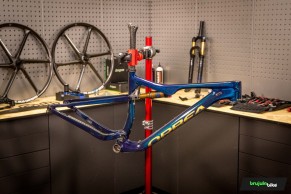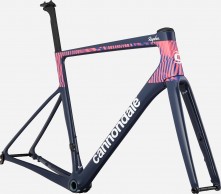Buying a bike in parts or complete, what is better?
Although the increasing integration of components has made it fall into disuse, buying a bike in pieces is the way to have the bike of our dreams, with exactly the components we choose. However, brands offer reliable assemblies with which to have a bike without complications. We tell you the advantages and disadvantages of each of the options.

Buying a bike in pieces or complete?
Those who have been in the cycling world for a good number of years will remember a time when, if you wanted a high-end bike, the usual way to get it was to buy the frame separately, the components separately, choose our favorite group, and even build custom wheels, with hubs, spokes, and rims that best suited what we were looking for.
Gradually, brands began offering more complete assembly options in their catalogs, reducing the possibilities of choice and making this practice of building a custom bike practically limited to those who opt for custom-made frames or those looking for an assembly with premium components that are impossible to find in standard models.
RECOMENDADO

Complete list of the highest paid cyclists of 2025

Shimmy Effect: why some bikes become uncontrollable when going downhill

How many calories are burned when cycling

What is heart rate variability and how does it affect the cyclist?

Fat Max Training to efficiently eliminate fat

Change wheels if you want to transform your bike's behavior
 Some brands like Trek with their Project One program or Orbea through the MyO customization options have made their standard assemblies more flexible allowing us not only to customize the decoration of our new bike but also to choose components and wheels from a limited offer from brands collaborating with the brand in question.
Some brands like Trek with their Project One program or Orbea through the MyO customization options have made their standard assemblies more flexible allowing us not only to customize the decoration of our new bike but also to choose components and wheels from a limited offer from brands collaborating with the brand in question.
We also have to consider that in current bikes, some components such as seatpost and handlebar and stem set are specifically designed to integrate into the bike's aerodynamic structure, so it is not possible to use others that are not theirs, something that also reduces the choice capacity.
Choosing a standard bike
If we don't want to complicate our lives when buying our new bike, the easiest thing is to choose one of the standard models offered by brands. Nowadays, the ranges and assembly options are quite wide and usually have a good quality scaling that allows us to easily find the one that best fits our budget and intended use.
However, many times, the need to adhere to the availability of their suppliers and to adjust the price of the assemblies forces brands to resort to some generic components that are clearly below the level of the bike. This is usually especially evident in the wheels chosen in medium and entry-level assemblies, the main point where brands can cut costs and where, often, very basic models are found.
Anyway, as a general rule, buying a complete bike continues to be a more economical way to have a new bike except for those capable of delving into the depths of the internet to find the best deals on each of the elements that will make up their future bike.
Assembly by pieces
Currently, the option of assembling a bike in pieces is usually only used by those looking for an exclusive assembly completely to their liking.
 Most brands still offer separately their top-of-the-line frame kits which, in addition to the frame itself, usually include fork, seatpost, and handlebar/stem set that are often specific.
Most brands still offer separately their top-of-the-line frame kits which, in addition to the frame itself, usually include fork, seatpost, and handlebar/stem set that are often specific.
Obviously, buying a bike in pieces requires us to have a trusted workshop that assembles it properly, at least the bottom bracket bearings which, with the usual press-fit systems, require a specific tool that we do not usually have in our home workshop if we are lovers of mechanics.
And the assembly of current bikes, with all the cables routed inside from end to end, has a certain complexity that sets it apart from the reach of many users, although the process is simplified if we use a wireless group like SRAM eTap AXS or the new Shimano Di2 that reduce the wiring to the junction of both derailleurs and the battery.
Opting for assembly by pieces can also be a good option if our current bike already has a good range of components and we want to upgrade to a frame with better performance. In this case, the main critical point to consider is the compatibility of our cranks with the bottom bracket system of the new frame, as well as the size of the stem with some brands using a 1 1/4" diameter instead of the usual 1 1/8".
Assembly by pieces often turns out to be more expensive than a standard one. Obviously, by purchasing the different elements separately, we will never be able to do it at the price that brands obtain those same components when buying directly from the manufacturer and in large volumes.

Furthermore, those who choose assembly by pieces usually look for components that are out of the ordinary and, in some cases, from those elitist brands that many of us think of to achieve a completely exclusive bike.
And you, how do you prefer your new bike to be? Standard or in pieces?